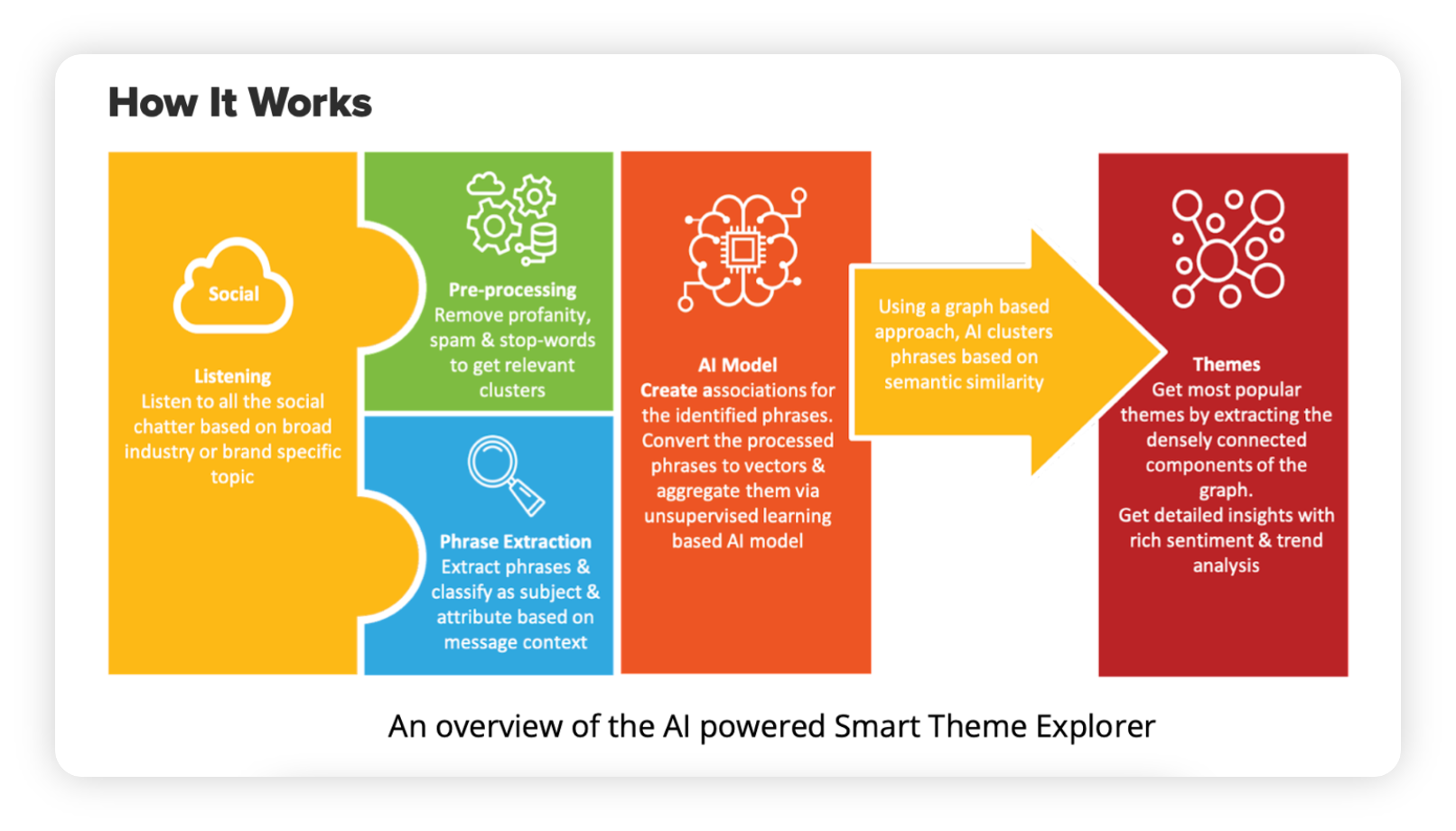What is Smart Theme Explorer?
Updated
Smart Theme Explorer, powered by Sprinklr AI, enables brands to understand their consumers' unmet needs, and top trends around their brands, products, and/or categories. It will enable you to discover top themes automatically synthesized from conversations using unsupervised clustering. You can be informed on the "unknowns" – underlying conversations, sentiments, shifts, and trends. The top keywords forming a cluster can be used to create themes to power the existing setup for further analysis. Deep dive into clusters to get more context and find actionable insights.
Use cases
Brand Reputation Management: Use Smart Theme Explorer to monitor and analyze conversations around your brand, products, or categories across social media and other sources to identify trends, sentiments, and unmet needs.
Product Feature Analysis: Use Smart Theme Explorer to extract key phrases and attributes from user-generated content to identify the most important features of your product and track changes over time.
Competitive Analysis: Use Smart Theme Explorer to compare conversations around your brand with those of your competitors to identify strengths, weaknesses, and opportunities.
Campaign Analysis: Use Smart Theme Explorer to track the performance of your marketing campaigns and identify what resonates most with your audience.
Crisis Management: Use Smart Theme Explorer to monitor and analyze conversations around a crisis situation related to your brand, products or categories to quickly identify emerging issues and respond proactively.

Data pre-processing
The process of analyzing data in Smart Theme Explorer involves several steps, starting with data pre-processing. During this stage, the model filters out irrelevant messages, such as those containing profanity or spam, to focus only on relevant data.
Phrase detection
The next step is phrase detection, which involves identifying key phrases in the messages to capture their essence and create clusters based on common themes. This includes detecting brands, products, entities, and attributes that describe what is being talked about in the messages. With this approach, over 90% of important phrases can be detected automatically.
Create sub-clusters within main clusters
Once the phrases are detected, the model looks for associations between them to create sub-clusters within the main clusters. This is done through subject-subject, subject-attribute, and attribute-attribute associations, which help understand what entities are being talked about together or in similar contexts and what is being spoken about an entity. This process helps identify meaningful relationships between the subjects and attributes and define sub-clusters for a given cluster.